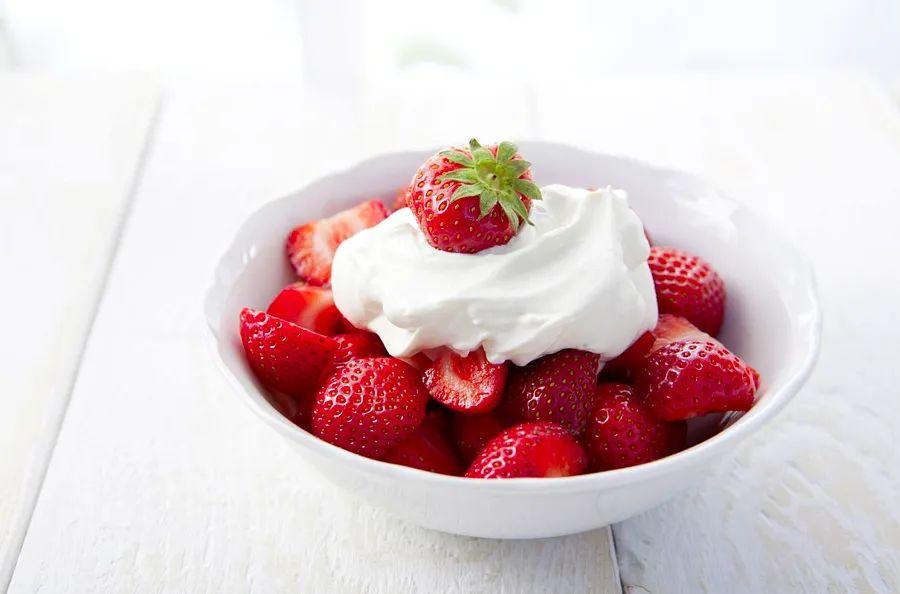What Is Double Cream and How Does It Differ from Heavy Cream?

From heavy cream and heavy whipping cream to double cream and clotted cream, the dairy aisle offers quite a variety of cream types.
Cream deserves its own aisle—it’s such an iconic product that it has even evolved into distinct textures. The sensation of cream is so unique, we often use it to describe other experiences.
With some cream types sharing similar names, distinguishing between them can be tricky. So, how do you handle a recipe that specifically calls for double cream?
What Exactly Is Double Cream?
Cream is the fatty layer that rises to the top of milk and is skimmed off before the milk undergoes homogenization. Double cream, on the other hand, is created by applying centrifugal force to unhomogenized milk, separating the butterfat from the milk.
Double cream earns its name with a remarkable 48% butterfat content, making it one of the richest cream types. For comparison, heavy cream or heavy whipping cream contains 36-38% fat, while whipping cream has just 30%.
Pastry chefs favor double cream for its thickness, giving them a head start when making whipped cream. However, it’s important not to overwhip it, as it can easily separate into butter. Double cream is widely popular in Britain and Europe, known for its rich, indulgent texture.
In Britain, double cream is used much like heavy cream or whipping cream in the U.S., but it’s also enjoyed on desserts in the same way we might use ice cream.
How Is Double Cream Used?
Double cream is most commonly used to make whipped cream, but it also creates a luxurious crème anglaise or other custards, whether in its natural state or flavored. Its high fat content not only adds richness to custards but enhances the texture, making anything it touches feel extra indulgent.
The fat content in double cream makes it perfect for hot dishes, as it’s less likely to separate under heat. It’s a great addition to dishes like crème caramel, pasta sauces such as tomato cream, or in a rich sauce made from broth and pan drippings for roasted chicken. Double cream can also enrich risotto, pair beautifully with scones, or be poured over pie or other desserts, as is common in the UK.
Can You Replace Heavy Cream with Double Cream?
Double cream can be tough to find in the U.S., so heavy cream is often used as a substitute. However, there are a few things to consider when making the switch.
- Whatever you’re making won’t be as rich as the recipe author intended. 9 times out of 10 this difference in richness will be negligible, just don’t venture out into swapping a clotted cream or cultured product like sour cream. Those have very different behaviors than heavy cream that might go rogue and ruin your dish.
- If you’re adding cream to an acidic sauce like tomato, a less fatty cream could separate. Heavy cream will probably be fine, but whipping cream would be a bit of a risk. To be safe, remove the pan from the heat before adding the cream and avoid bringing it back to a boil afterward.
Using heavy cream instead of double cream for whipped applications is generally fine, but avoid ultra-pasteurized heavy cream, as it will be harder to whip and won’t taste as fresh.
When substituting a cream with lower fat content in baked goods, be cautious. The reduction in fat could result in a dry or greasy outcome, depending on the recipe. It might affect the batter’s rise, cooking time, and the final appearance of the dish. While I haven't had major issues replacing double cream with heavy cream in baking, if there’s a problem, it’s usually due to the fat content.
How to Make Double Cream
Since double cream is often a specialty item, there are a couple of ways to make it at home.
Stovetop Method: Pour ½ gallon of whole milk into a large saucepan over low heat. Stir occasionally to prevent scorching, and bring it to a gentle boil. Then, use a slotted spoon to skim the cream from the top and transfer it to an airtight container. Refrigerate it for a day, then blend it to smooth out the cream.
Countertop Method: This method is simple and hands-off. Pour one cup of heavy cream into a glass jar with a tight-fitting lid, then add one tablespoon of buttermilk. Close the lid and shake for one full minute. Wrap the jar in a thick towel and let it sit at room temperature for 12 hours. The cream will thicken but remain liquid. This version will have a tangier taste, so you might want to add a little sweetener if needed.

1

2

3

4

5
Evaluation :
5/5